History
A place of Worship since 1140
Explore over 900 years of history Bristol Cathedral. Delve through our interactive history timeline, join one of our guided tours and discover the Cathedral’s digital archive.
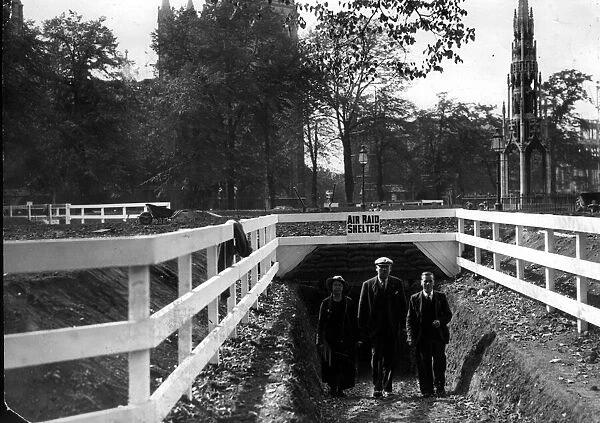

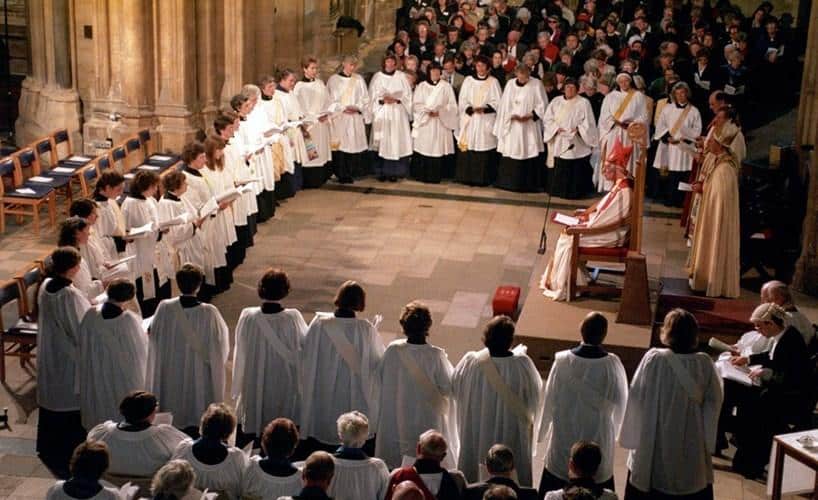



Discover history
Bristol Cathedral has been, and continues to be, a place of praise and prayer where Christians gather every day to worship God. In this place of sanctuary and peace all are welcome, of every faith or none. It is a fascinating building which tells a story going back over 900 years as power ebbs and flows between groups and individuals who have left their mark here.
Explore the history of Bristol Cathedral

The Gospels were written

The Gospels were written
The Gospels, written 60-120, tell the story of the life, work and teachings of Jesus. The word Gospel comes from a Greek word meaning ‘good news’. There are four Gospels in the New Testament of the Bible. They are Matthew, Mark, Luke and John.
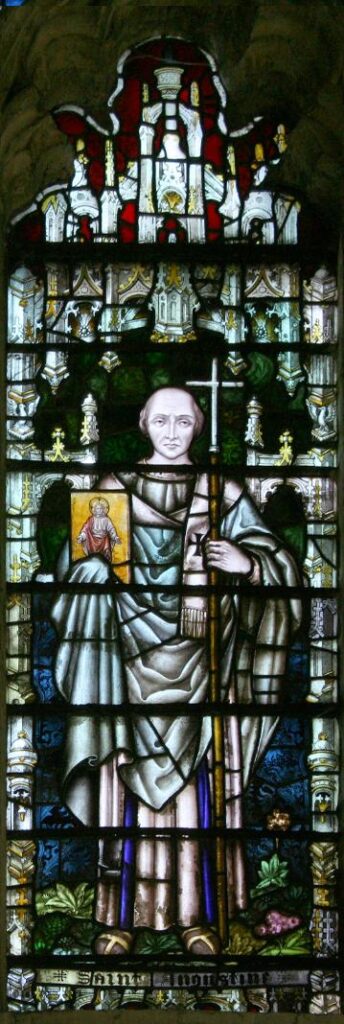
St Augustine
The king at the time was King Æthelberht. Æthelberht met with Augustine, and eventually converted to Christianity. He may have been more sympathetic to Christianity as Queen Bertha, his wife, was most likely already a Christian. Bertha was Frankish (an area of Europe which went on to become modern day France), which was already a Christian nation.
Æthelberht founded the Abbey of St Peter and Paul (known today as Canterbury Cathedral) in 598, and made St Augustine the first Archbishop of Canterbury, still the most senior figure in the Church of England today.
Image courtesy of Caterbury Cathedral

St Augustine
St Augustine was a monk who was sent to from Rome to England to convert the Anglo-Saxons to Christianity. During the Roman occupation England had been Christian, but after the Romans left the country reverted back to paganism.
The king at the time was King Æthelberht. Æthelberht met with Augustine, and eventually converted to Christianity. He may have been more sympathetic to Christianity as Queen Bertha, his wife, was most likely already a Christian. Bertha was Frankish (an area of Europe which went on to become modern day France), which was already a Christian nation.
Æthelberht founded the Abbey of St Peter and Paul (known today as Canterbury Cathedral) in 598, and made St Augustine the first Archbishop of Canterbury, still the most senior figure in the Church of England today.
Image courtesy of Caterbury Cathedral
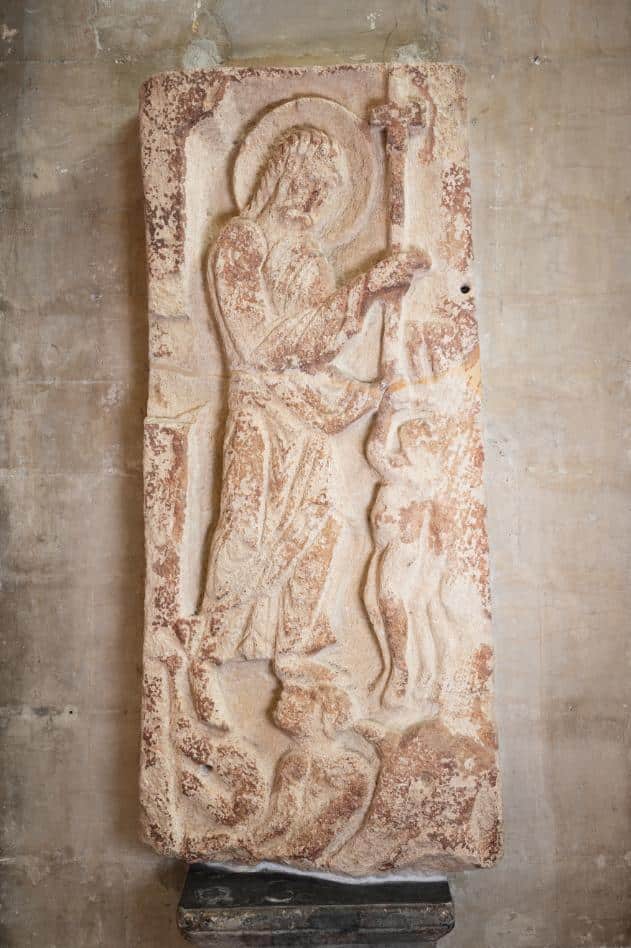
The Harrowing of Hell

The Harrowing of Hell
Around 1040, the Harrowing of Hell was carved. This incredibly rare Anglo-Saxon sculpture was found inside the Cathedral in 1831. It shows Jesus rescuing Adam and Eve from Hell. Today, you can find the Harrowing of Hell in the South Transept of the Cathedral.

Battle of Hasting

Battle of Hasting
At the Battle of Hastings in 1066, King Harold II of England was defeated by William the Conqueror. Harold was the last Anglo-Saxon king of England, and William was French. This led to major cultural and economic changes within the country.

Abbey of St Augustine is founded in Bristol

Abbey of St Augustine is founded in Bristol
In 1140 a local merchant, Robert Fitzharding began to establish a monastery on the site known today as Bristol Cathedral. The monastery was a community of “canons regular” – priests who lived a disciplined life under a rule or pattern based on that of St Augustine of Hippo. The first canons came from St Victoire in Paris, the foundation of one of the earliest Universities in Europe. By 1158-1160 the church was ready for the canons to worship in.

Chapter House is built

Chapter House is built
The Chapter House is the oldest surviving part of the site and dates from around 1160. It is a superb example of Romanesque architecture, identifiable by its rounded arches and elaborate decoration.

The Magna Carta is signed
Today Magna Carta is seen as an important document was the first time that laws were designed to be fair for everyone, not just the rich and powerful. Four copies of the original charter survive. Two can be found in the British Library, one in Salisbury Cathedral and another in Lincoln Castle.

The Magna Carta is signed
Magna Carta is a royal charter of rights agreed to by King John of England on 15 June 1215. King John was an unpopular king who taxed his subjects heavily and spent vast sums of money on unsuccessful foreign policies. A group of barons (members of the nobility) were threatening to rebel against John so the Archbishop of Canterbury, Cardinal Stephen Langton, drafted a charter to make peace. Amongst other things, the charter promised to protect church rights and protect the barons from being illegally imprisoned. Neither side kept the promises they had made, and the charter was repeatedly renegotiated.
Today Magna Carta is seen as an important document was the first time that laws were designed to be fair for everyone, not just the rich and powerful. Four copies of the original charter survive. Two can be found in the British Library, one in Salisbury Cathedral and another in Lincoln Castle.
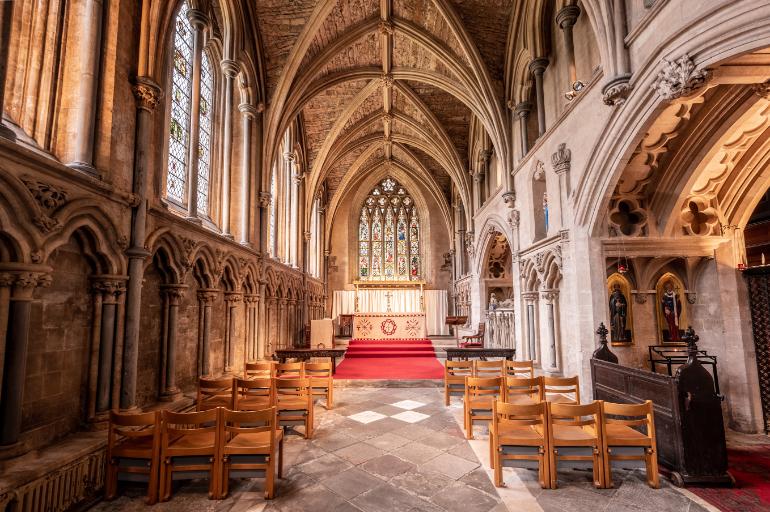
The Elder Lady Chapel is built

The Elder Lady Chapel is built
The Elder Lady Chapel is one of the oldest part of the Cathedral. Built in 1220, it is designed in the gothic style, recognisable by its pointed arches and free-standing pillars. This chapel is full of intricate carvings including a monkey playing the pipes, a ram playing a violin and a ‘green man’, a head with leaves coming out of his mouth. Green men are ancient symbols of new life and new birth, probably pre-dating Christianity, but used as a symbol of Christ’s resurrection.
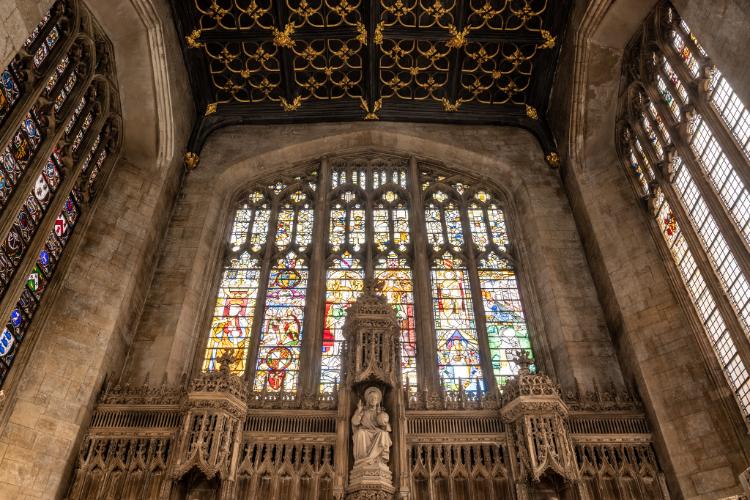
The Hospital of Saint Mark is built

The Hospital of Saint Mark is built
The Hospital of Saint Mark, known today as The Lord Mayor’s Chapel, is located across College Green from the Cathedral. The two organisations worked together, and the hospital provided food and care for 100 people every day.

Martin Luther creates the Lutheran Church

Martin Luther creates the Lutheran Church
Martin Luther was a German monk who was concerned with the way that the Roman Catholic Church was run. He was especially unhappy about indulgences, a payment made to the Church that bought forgiveness for sin. Despite orders for his arrest, Luther broke away from the Roman Catholic Church and was followed by many others who wanted to see the church reformed, they are sometimes known as protestant (protesting) churches.
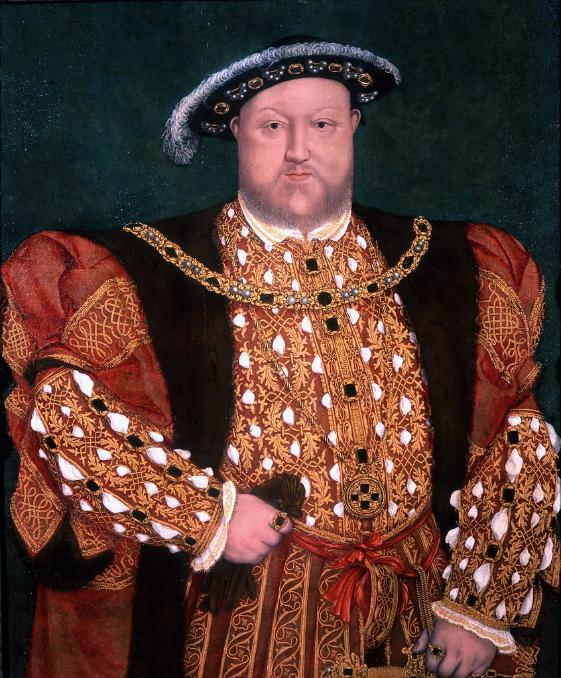
King Henry VIII declares himself the Supreme Head of the Church in England

King Henry VIII declares himself the Supreme Head of the Church in England
In 1534 King Henry VIII declared himself the Supreme Head of the Church in England and broke all ties with the Pope in Rome. Although his dispute was mainly over the validity of his marriage to Catherine of Aragon and his desire for a divorce, the new Church of England was also influenced by changes brought about in the reformation by Luther and other European theologians

The creation of the Diocese of Bristol and Bristol Cathedral
In 1542, Henry decided to create dioceses across the country. Each diocese needed a Cathedral, so some of the old abbeys were saved. Bristol was one of these. Thus, Bristol Cathedral, dedicated to the Holy and Undivided Trinity, was founded with priests ruled over by a Dean, living not in a communal dormitory but separate houses. This kind of community was “collegiate” rather than monastic and gives its name to the land to the north of the Cathedral, “College Green”. This is how the Cathedral is run today.

The creation of the Diocese of Bristol and Bristol Cathedral
The changes made by Henry VIII in the 1530s meant that all English monasteries were closed, and many were destroyed. In 1539 the Augustinian canons were dispersed and given pensions.
In 1542, Henry decided to create dioceses across the country. Each diocese needed a Cathedral, so some of the old abbeys were saved. Bristol was one of these. Thus, Bristol Cathedral, dedicated to the Holy and Undivided Trinity, was founded with priests ruled over by a Dean, living not in a communal dormitory but separate houses. This kind of community was “collegiate” rather than monastic and gives its name to the land to the north of the Cathedral, “College Green”. This is how the Cathedral is run today.

The Hospital of St Mark is closed
Over the next 200 years the hospital site including the Chapel was used by many organisations including Queen Elizabeth Hospital School for Boys, Redmaids’ High School, and the Society of Merchant Venturers.

The Hospital of St Mark is closed
Along with the Abbey of St Augustine, the hospital closed in 1539 when Henry VIII broke away from the Roman Catholic Church to form the Church of England. The Hospital of Saint Mark was bought in 1541 by the organisation that became Bristol City Council for £1,000 (around £700,000 in today’s money).
Over the next 200 years the hospital site including the Chapel was used by many organisations including Queen Elizabeth Hospital School for Boys, Redmaids’ High School, and the Society of Merchant Venturers.
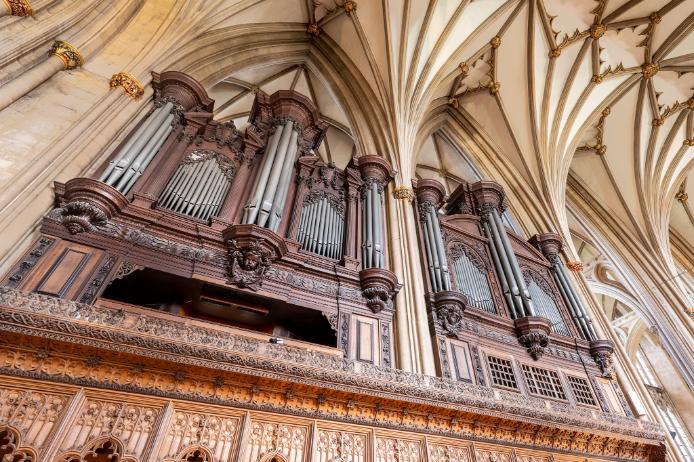
The current Cathedral organ is installed
The new instrument was of such high quality that it remained unaltered for the next 100 years. Between 1780 and 1838 some modifications were made including adding an extra keyboard and ten more pipes. Since then, the organ has had some light restoration to keep it in good condition. Between 2024-2025, the organ will be carefully taken apart, cleaned, mended and rebuilt by expert organ builders Harrison and Harrison to ensure its excellence for the next generation. You can find out more about the organ restoration here.

The current Cathedral organ is installed
The organ you see in the Cathedral today was completed in 1685, having been commissioned in 1682. The organ was built by Renatus Harris, a distinguished organ builder who was popular at the time. Harris built instruments in many other Cathedrals including Salisbury and Winchester.
The new instrument was of such high quality that it remained unaltered for the next 100 years. Between 1780 and 1838 some modifications were made including adding an extra keyboard and ten more pipes. Since then, the organ has had some light restoration to keep it in good condition. Between 2024-2025, the organ will be carefully taken apart, cleaned, mended and rebuilt by expert organ builders Harrison and Harrison to ensure its excellence for the next generation. You can find out more about the organ restoration here.
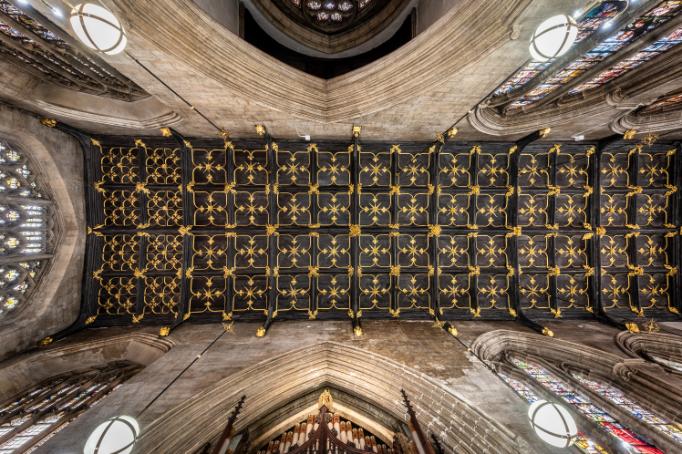
The Lord Mayor begins worshipping at The Lord Mayor’s Chapel

The Lord Mayor begins worshipping at The Lord Mayor’s Chapel
Following an argument with the Dean and Chapter of the Cathedral, the Mayor and Corporation stopped worshipping in the Cathedral and began to worship in the Lord Mayor’s Chapel instead.

The Industrial Revolution
Some of the money used to enable the industrial revolution came from the trade of enslaved people. Merchants involved with the trade became extremely wealthy reinvested some of the profit in advancing technology in Britain. As Bristol was a major trading port, much of the city’s money came from this trade. You can find out more about the Cathedral’s connections to the trade of enslaved people here.
Throughout the industrial revolution, the population of cities like Bristol grew rapidly. In 1701, the city’s population was around 20,000 people. Over the next 100 years, this grew to 64,000.

The Industrial Revolution
The technological advances made during the industrial revolution transformed almost every aspect of life in Britain, from the way people worked, how they ate and how they travelled. For example, the steam engine invented in 1778 required coal, so people began to work in coal mines. These advances meant that for the first time, goods were made in factories. Both the mines and factories were incredibly dangerous places to work and many people died. Children were made to work long hours in difficult jobs. Those who survived were paid very little, and the standard of living across the working class was very poor.
Some of the money used to enable the industrial revolution came from the trade of enslaved people. Merchants involved with the trade became extremely wealthy reinvested some of the profit in advancing technology in Britain. As Bristol was a major trading port, much of the city’s money came from this trade. You can find out more about the Cathedral’s connections to the trade of enslaved people here.
Throughout the industrial revolution, the population of cities like Bristol grew rapidly. In 1701, the city’s population was around 20,000 people. Over the next 100 years, this grew to 64,000.
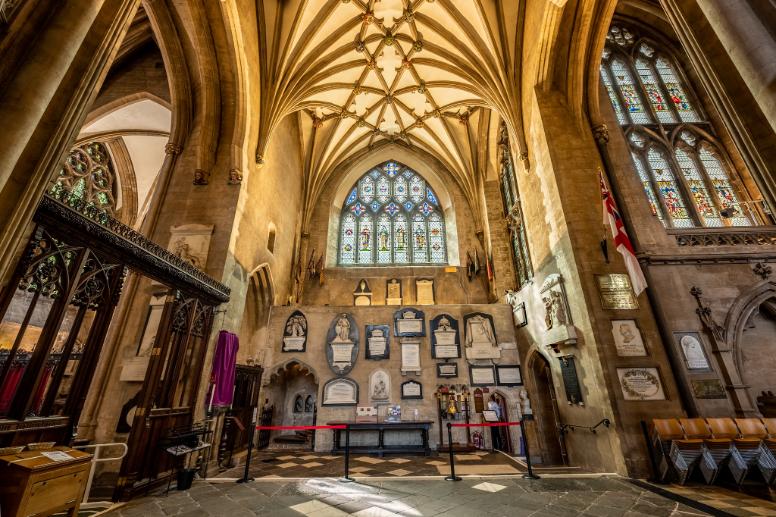
Enslavement abolished
Attitudes to slavery gradually changed over the 1700s, in part due to enslaved people who fought for their freedom. By 1807 it was illegal within British colonies to purchase enslaved people directly from Africa, but it was not illegal to keep people who were already enslaved until 1834. Although it became illegal within the British colonies to own enslaved people in 1834, many were transferred to ‘apprenticeships’ which were effectively enslavement under another name. It was another four years until the majority of enslaved people were freed. Today, nearly 200 years since the end of the trade, the repercussions of the racism that created the trade of enslaved people can still be clearly seen.
Bristol Cathedral is one of many institutions that benefited from funds derived from the trafficking and enslavement of Africans during the Transatlantic slave trade. Within its walls you will find memorials to at least 200 individuals who directly made money from this abhorrent practice. You can find out more about All God’s Children, the Cathedral’s work to identify and address its connection to the trade here.

Enslavement abolished
For much of the 1700s, few Europeans or Americans opposed the trade of enslaved of people. Many both defended the trade and identified as Christian. For example, Edward Colston (1636-1721), a merchant and trader who came from a wealthy Bristol family, did not believe that selling people into slavery was incompatible with his Christian faith.
Attitudes to slavery gradually changed over the 1700s, in part due to enslaved people who fought for their freedom. By 1807 it was illegal within British colonies to purchase enslaved people directly from Africa, but it was not illegal to keep people who were already enslaved until 1834. Although it became illegal within the British colonies to own enslaved people in 1834, many were transferred to ‘apprenticeships’ which were effectively enslavement under another name. It was another four years until the majority of enslaved people were freed. Today, nearly 200 years since the end of the trade, the repercussions of the racism that created the trade of enslaved people can still be clearly seen.
Bristol Cathedral is one of many institutions that benefited from funds derived from the trafficking and enslavement of Africans during the Transatlantic slave trade. Within its walls you will find memorials to at least 200 individuals who directly made money from this abhorrent practice. You can find out more about All God’s Children, the Cathedral’s work to identify and address its connection to the trade here.
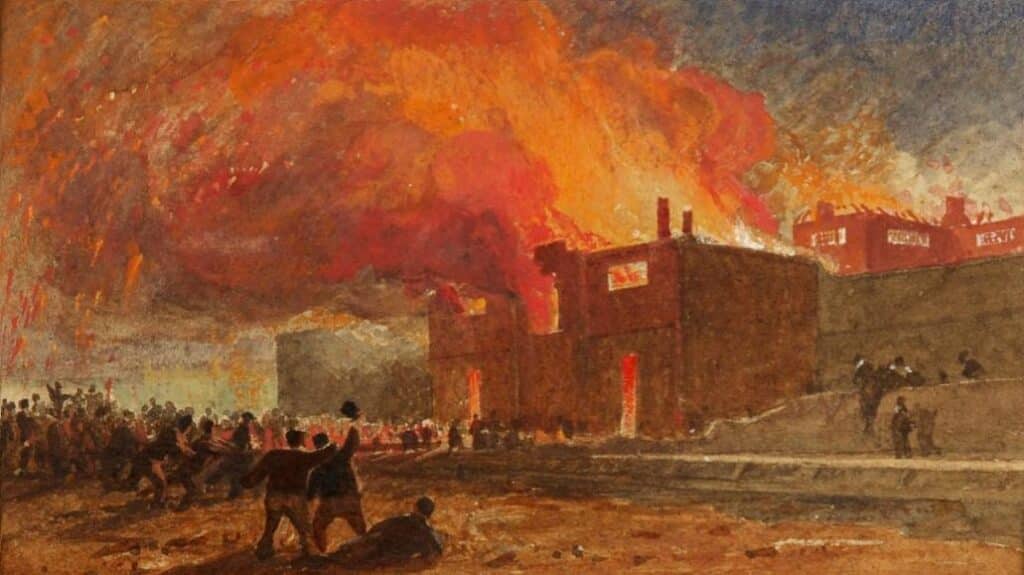
Bristol Riots
The riots lasted for three days. Many properties, including the Bishop’s Palace, were destroyed. Building work on Clifton Suspension Bridge was paused. The Cathedral’s library, located at the time in the Chapter House, was destroyed by fire. The rioters tried to get into the main church but were prevented from doing so by William Phillips, the Cathedral’s sub sacrist.

Bristol Riots
The Bristol Riots took place in 1831. The House of Lords voted to reject the Second Reform bill. The bill had sought to change the electoral system across England and Wales, and would have given many more people the chance to vote. Charles Wetherell, a judge who voted against the bill, stated in Parliament that the city of Bristol was against the reforms, which was untrue.
The riots lasted for three days. Many properties, including the Bishop’s Palace, were destroyed. Building work on Clifton Suspension Bridge was paused. The Cathedral’s library, located at the time in the Chapter House, was destroyed by fire. The rioters tried to get into the main church but were prevented from doing so by William Phillips, the Cathedral’s sub sacrist.
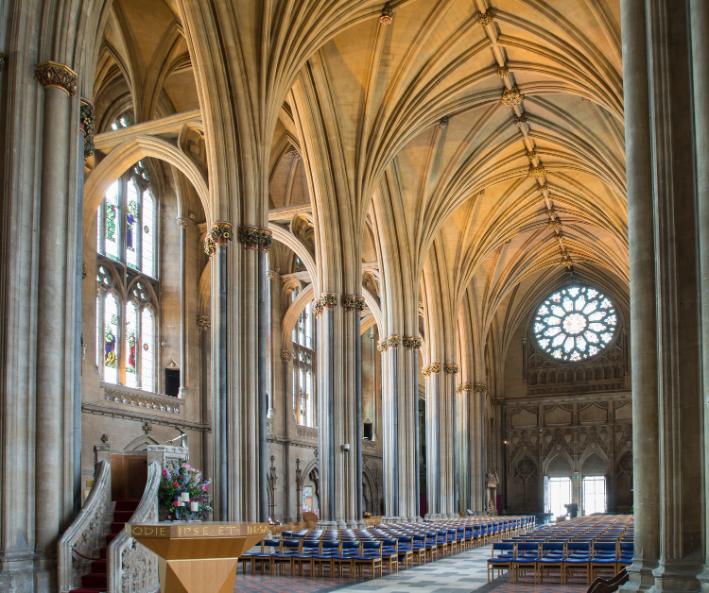
Nave
The Nave was funded by public subscription, meaning many people of Bristol contributed to its building rather than there being one or two large gifts as was more frequently the case.

Nave
The Nave is the most recently constructed part of the Cathedral, built between 1868 and 1877. The space feels elegant, airy and light owing to its ‘hall church’ design. This means that the aisle on either side are the same height as the main Nave. The design echoes the medieval parts of the Cathedral.
The Nave was funded by public subscription, meaning many people of Bristol contributed to its building rather than there being one or two large gifts as was more frequently the case.
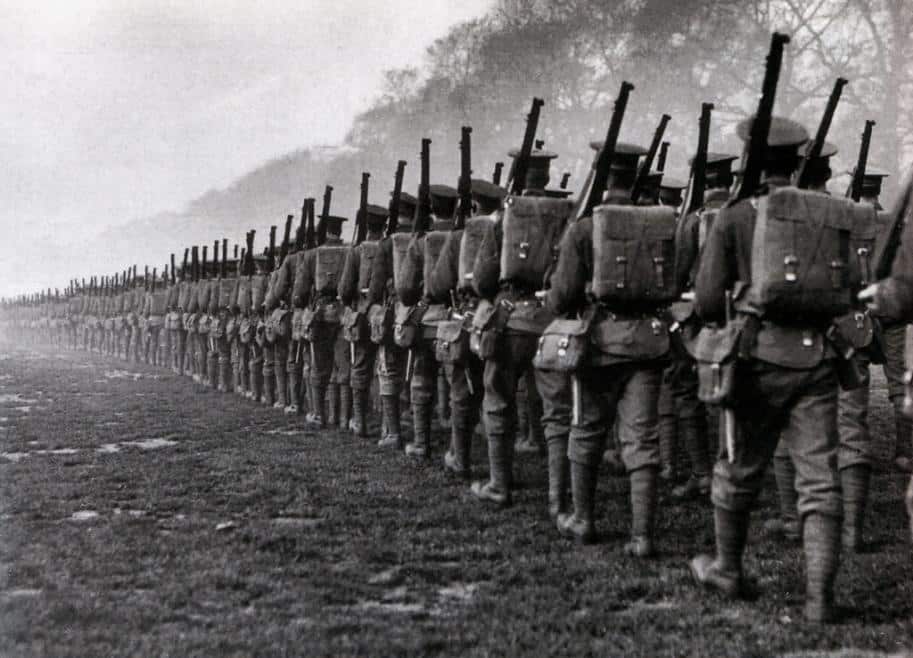
The First World War takes place

The First World War takes place
In 1914, the First World War began. It was a global conflict that was fought mostly on European soil, but spread across the world partly as a result of European countries’ wide reaching empires. Tensions had been growing in Europe for many years, but the event that sparked the war was the assassination of Archduke Franz Ferdinand of Austria-Hungary. The war lasted for four years and resulted in millions of deaths and even more wounded.

The Second World War takes place

The Second World War takes place
In 1939 Germany, led by Adolf Hitler, invaded Poland. As a result Britain declared war on Germany, and the Second World War began. Much like the First World War, the Second World War was mainly fought in Europe but its reach extended much further afield. The war lasted for six years and resulted in millions of deaths and even more wounded.

War damage

War damage
The city of Bristol suffered from extensive bomb damage during the Second World War, due to the proximity of its port. All the stained-glass windows on the north side of the Cathedral were blown out in 1941.
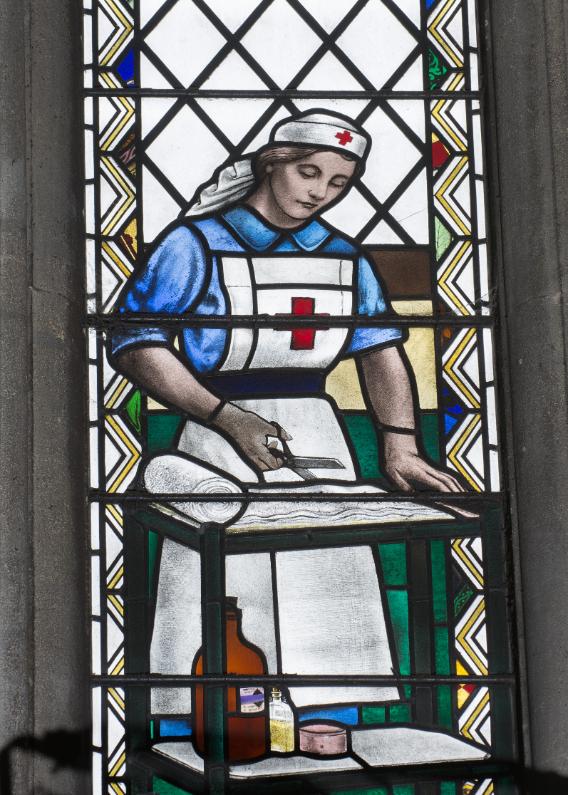
Post war restoration

Post war restoration
New stained glass windows were installed in the Nave in 1951 to celebrate the contribution of local people to the war effort. These windows can still be seen today, and they are all portraits of real individuals.
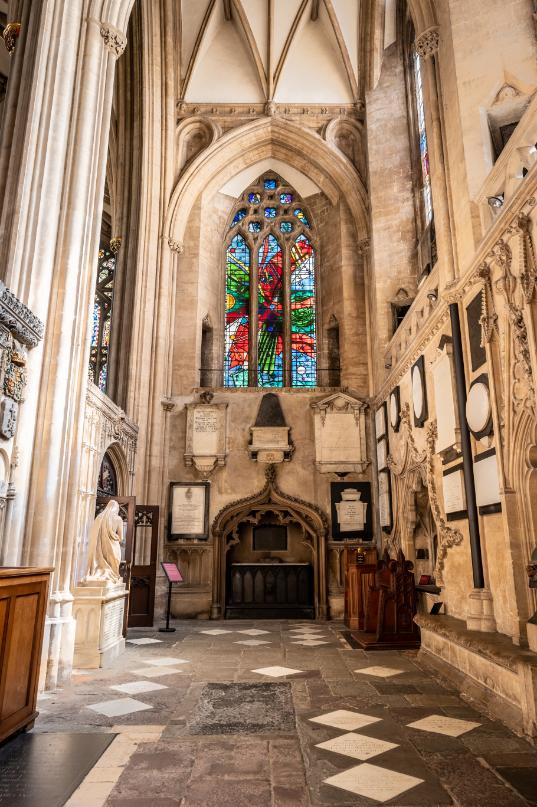
Installation of the Holy Spirit Window

Installation of the Holy Spirit Window
The Holy Spirit window at the end of the South Quire Aisle was installed in 1965. It was designed by Keith New (1925-2012), and represents the Holy Spirit in abstract form. The Holy Spirit is one of the three ways that we know God and is represented in wind, fire and water, bringing energy, light and life to Christians today.

Ordination of Women

Ordination of Women
In 1992 the Church of England passed laws to enable women to become priests and the very first ordinations of women to the priesthood took place in Bristol Cathedral in 1994. This event is commemorated in a plaque on the north wall of the nave.

Girl choristers are introduced

Girl choristers are introduced
Bristol Cathedral Choir was the first Cathedral Choir in the country to introduce girl choristers.

The Lord Mayor’s Chapel

The Lord Mayor’s Chapel
In 2023, Bristol Cathedral took on care of The Lord Mayor’s Chapel. You can find out more about visiting and worshipping at the chapel here.
The Gospels were written
60-120
St Augustine
597
The Harrowing of Hell
1040
Battle of Hasting
1066
Abbey of St Augustine is founded in Bristol
1140
Chapter House is built
1160
The Magna Carta is signed
1215
The Elder Lady Chapel is built
1220
The Hospital of Saint Mark is built
1230
Martin Luther creates the Lutheran Church
1517
King Henry VIII declares himself the Supreme Head of the Church in England
1534
The creation of the Diocese of Bristol and Bristol Cathedral
1539-1542
The Hospital of St Mark is closed
1539
The current Cathedral organ is installed
1685
The Lord Mayor begins worshipping at The Lord Mayor’s Chapel
1722
The Industrial Revolution
1760-1900
Enslavement abolished
1807
Bristol Riots
1831
Nave
1868-1877
The First World War takes place
1914-1918
The Second World War takes place
1939-1945
War damage
1941
Post war restoration
1951
Installation of the Holy Spirit Window
1965
Ordination of Women
1994
Girl choristers are introduced
2005
The Lord Mayor’s Chapel
2023
If you would like to know more about the Cathedral’s history, purchase a guidebook from the Cathedral shop on your next visit
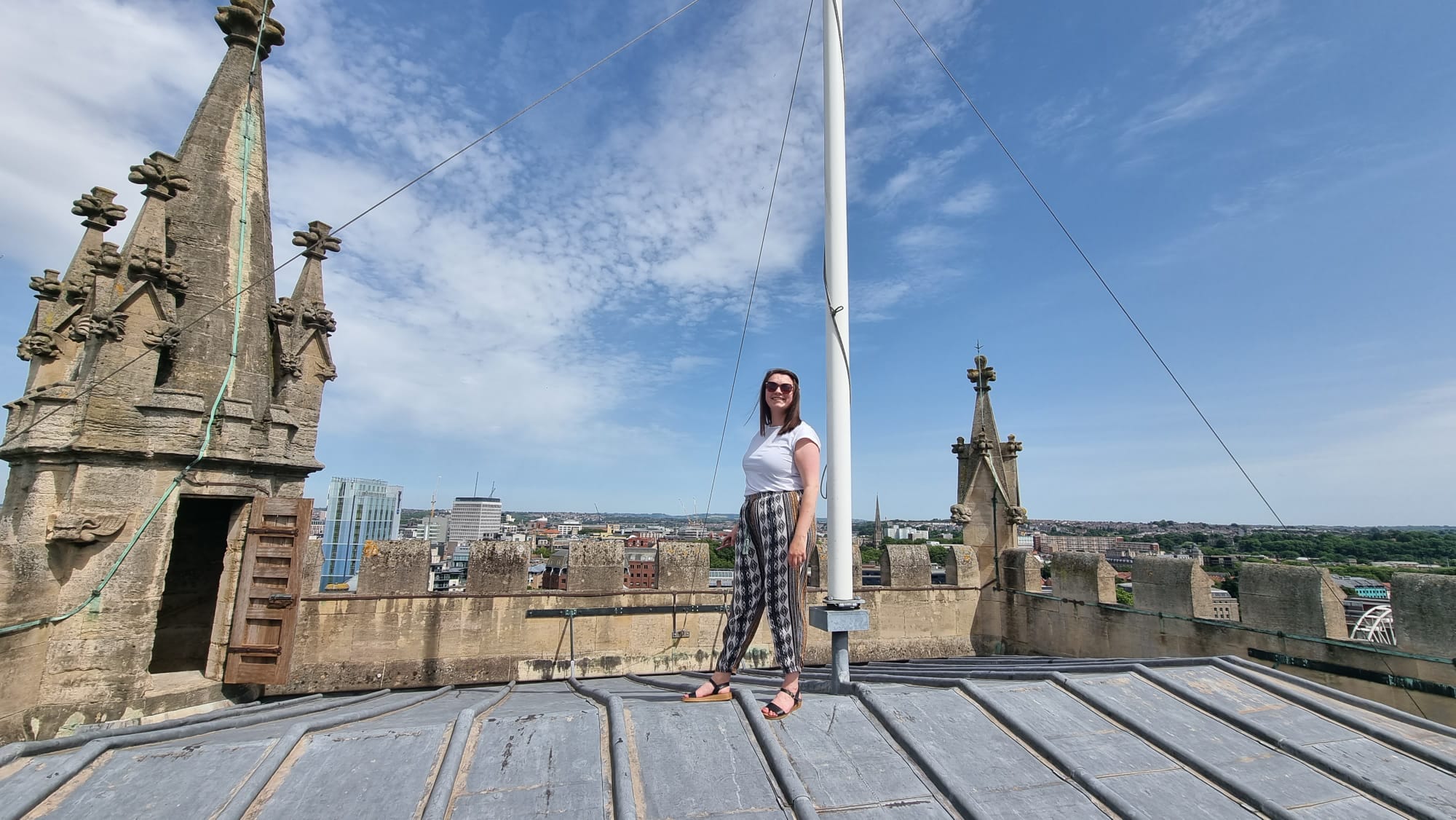
Guided Tours
Join one of our expert guides on a guided tour to find out more about the Cathedral. Highlights tours explore the ground floor of the building, and tower tours take you high up onto the roof.
Learn More
Explore the Collection
Explore Bristol Cathedral’s digital collections of furnishings, archaeology, plate, monuments, textiles, books, and more.
Learn More